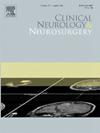在资源有限的情况下,将环磷酰胺作为侵袭性多发性硬化症(马尔堡变异型)的初始治疗--病例报告
IF 1.8
4区 医学
Q3 CLINICAL NEUROLOGY
引用次数: 0
摘要
马尔堡变异体多发性硬化症(MS)于1906年由奥地利神经学家Otto Marburg首次描述,其特征是暴发性单相病程,病程进展迅速,通常在数周或数月内导致死亡。由于其罕见性,目前尚无既定的治疗指南。一名34岁的男性在出现右下肢急性麻木和无力后被诊断为多发性硬化症。磁共振成像(MRI)显示大量的幕上和幕下白质斑块。患者接受类固醇脉冲治疗。然而,尽管接受了静脉注射免疫球蛋白和血浆交换,患者的病情在临床和放射学上继续恶化。进行了广泛的检查,以排除脑脊液(CSF)中存在寡克隆带(ocb)的其他鉴别诊断。考虑马尔堡变异型多发性硬化症的诊断,并开始高剂量环磷酰胺(HiCy)(50 mg/kg/d IV),隔天进行,持续4天。治疗结束后26天,患者表现出显著的临床改善,扩展残疾状态量表(EDSS)得分为5分。越来越多的证据表明,环磷酰胺可能是马尔堡变体多发性硬化症患者的有效治疗选择,这些患者通过常规急性治疗无法获得令人满意的临床改善。本文章由计算机程序翻译,如有差异,请以英文原文为准。
Cyclophosphamide as initial treatment of aggressive MS (Marburg variant) in resource limited settings – A case report
The Marburg variant of multiple sclerosis (MS), first described in 1906 by Otto Marburg, an Austrian neurologist, is characterized by a fulminant monophasic course with rapid disease progression, often leading to death within weeks or months. Due to its rarity, no established treatment guidelines exist. A 34-year-old man was diagnosed with MS after presenting with acute-onset numbness and weakness in the right lower limb. Magnetic resonance imaging (MRI) revealed a significant burden of numerous supra- and infratentorial white matter plaques. The patient was treated with steroid pulse therapy. However, the patient’s condition continued to deteriorate clinically and radiologically despite receiving intravenous immunoglobulin and plasma exchange. An extensive workup was performed to exclude other differential diagnoses that were significant for the presence of oligoclonal bands (OCBs) in the cerebrospinal fluid (CSF). A diagnosis of Marburg variant MS was considered, and high-dose cyclophosphamide (HiCy) (50 mg/kg/d IV) was initiated on alternate days for 4 days. Twenty-six days after treatment completion, the patient exhibited significant clinical improvement, with an Expanded Disability Status Scale (EDSS) score of 5. This case contributes to the growing evidence that cyclophosphamide may be an effective therapeutic option for patients with Marburg variants of MS who do not achieve satisfactory clinical improvement with conventional acute treatments.
求助全文
通过发布文献求助,成功后即可免费获取论文全文。
去求助
来源期刊

Clinical Neurology and Neurosurgery
医学-临床神经学
CiteScore
3.70
自引率
5.30%
发文量
358
审稿时长
46 days
期刊介绍:
Clinical Neurology and Neurosurgery is devoted to publishing papers and reports on the clinical aspects of neurology and neurosurgery. It is an international forum for papers of high scientific standard that are of interest to Neurologists and Neurosurgeons world-wide.
 求助内容:
求助内容: 应助结果提醒方式:
应助结果提醒方式:


